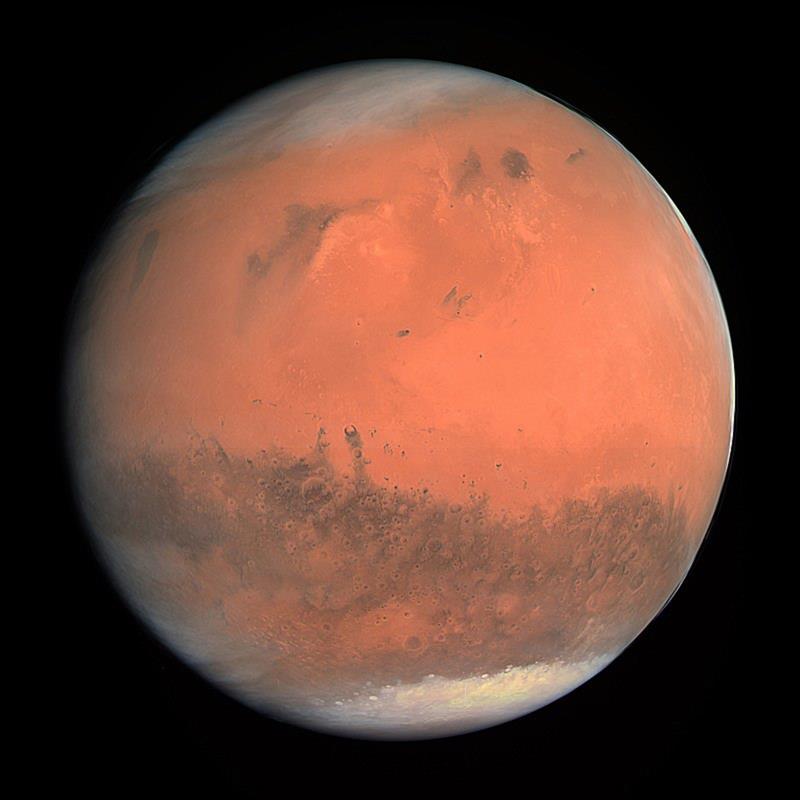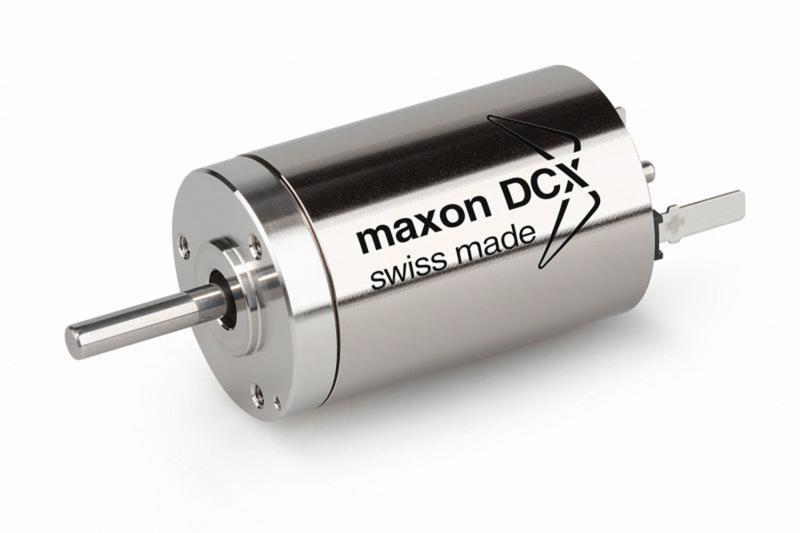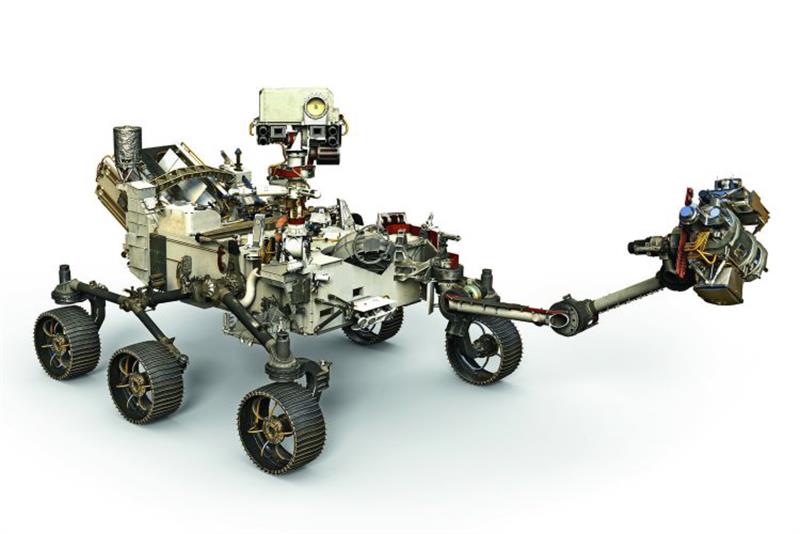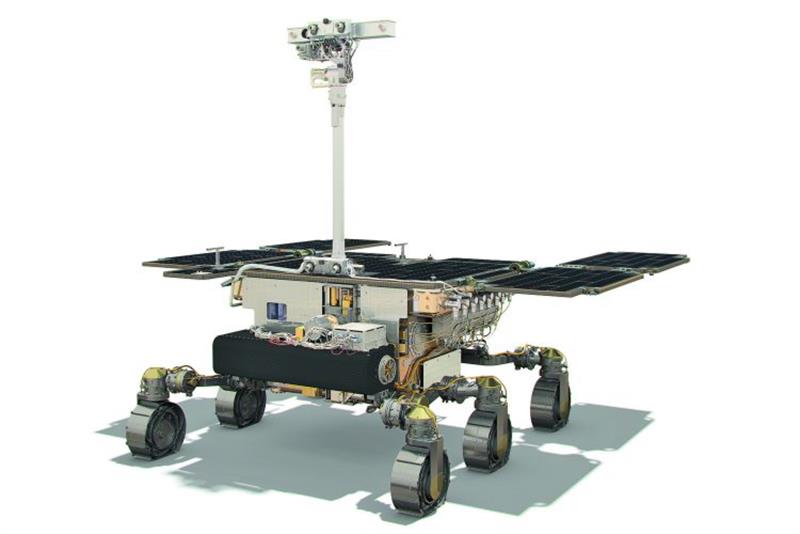Energy-efficiency
For the small helicopter to fly, it takes an enormous engineering effort. The thin air on Mars is comparable to conditions on Earth at an altitude of 30km. Also, taking the reduced Martian gravity into account, the helicopter needs to be very light (1.8kg) and can only carry small batteries.
The components used therefore must be extremely energy-efficient. Six of maxon motors’ 10mm diameter DCX precision micro motors, which have been used in previous Mars missions, will be used to move the swashplate, adjusting the inclination of the rotor blades, to control the vehicle.
The propulsion system is designed and built by AeroVironment, working closely with maxon engineers, under contract from JPL.
“Being part of another Mars pioneering project makes us incredibly proud,” says Eugen Elmiger, CEO of maxon motor.
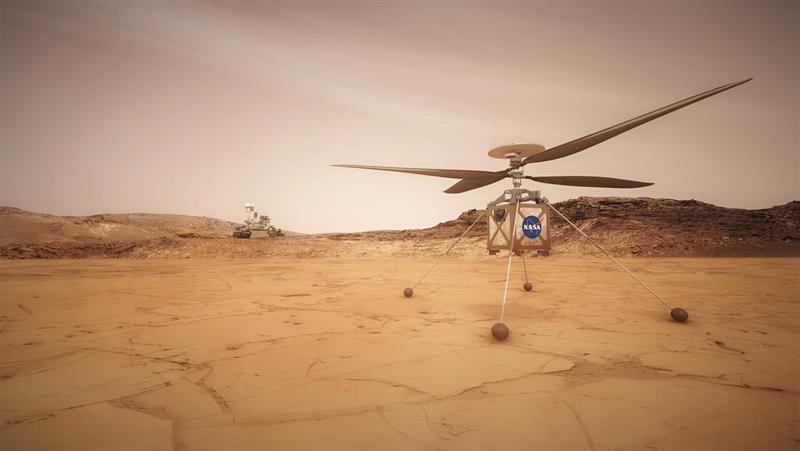 Artist's impression of the Mars helicopter
Artist's impression of the Mars helicopter
Mars ■ Named after the Roman god of war, Mars is the fourth planet from the Sun and is considered Earth-like. ■ Average temperature: -55°C ■ Diameter: 6.779km ■ Orbital period: 687 days ■ Length of the Martian day: 24h 40m ■ Gravitation: 38% that of the Earth’s gravity |
Temperature measurement
The Mars helicopter adds to several other Mars projects that maxon is currently involved in: For example, in the European Space Agency’s (ESA) ExoMars rover – with more than 50 drives located in the wheels, drill head, analysis unit and camera mast. This mission is also scheduled for launch in 2020.
On 26th November 2018, NASA’s InSight lander touched down on the surface of Mars to study the red planet’s seismic activity and record its core temperature.
Unlike Earth, Mars does not have tectonic plates and hardly any geological activity. The surface is still as it was four billion years ago, minus the lakes and rivers we now know used to exist there. Mars is interesting to researchers because it underwent the same basic formation process as Earth. Both started out as balls of liquid fire and, through the process of planetary differentiation, turned into terrestrial (rocky) planets. Heavy metals gravitated to the centre, where they formed the red-hot iron core. Above, the mantle was formed, enclosed by the crust, which cooled down and solidified.
A pile driver type mechanism on InSight, called HP3, will burrow almost 5m into the Martian soil to measure the planet’s temperature. Inside HP3, a maxon-built drive, consisting of a DCX 22 motor and a GP 22 HD planetary gearhead, will drive the probe into the ground while withstanding extremely high requirements such as temperature fluctuations, sand storms, and thin atmosphere, as well as forces of up to 400 g. The motor’s task is to wind up a spring, which then releases with great force, executing a powerful downwards punch. This causes the bolt to drive itself into the ground step by step. The process takes several hours. Once embedded, the device stays in place.
DCX 22 The DCX 22 can be configured online with ease and features high power and energy efficiency, which can be decisive when operated on a battery. For the InSight mission, the drive was reinforced to survive brutal impacts. Additional weld rings and joints at the bearings ensure that the drive withstands up to 400 g. The gearhead used with the motor is a GP 22 HD, a robust unit that is often used in deep drilling. |
The measurements are performed using a cable equipped with temperature sensors dragged along by the HP3. It is used to generate an exact temperature profile of the ground on Mars over a two-year period, to determine the surface heat flow.
“This quantity is a fundamental parameter when you want to characterise a planet”, says Judit Jänchen, project manager at the German space agency, which developed HP3. Information on the porosity and density of the ground can also be derived from the penetration speed of the probe. Both results are of great interest for terrestrial geophysics. “This gives us a better understanding of the formation and evolution of rocky planets,” Jänchen adds.
Two more Mars missions NASA plans to send its fifth rover to Mars in 2020. At the same time, the European Space Agency’s (ESA) first vehicle is scheduled to travel to the red planet. NASA – Mars 2020
Start: July/August 2020 Rocket: Atlas V-541 Mission: Finding out if there has ever been life on Mars. Taking soil samples and sealing them in containers that can later be collected and brought back to Earth. Cost: $2.1 billion maxon drives: Nine brushless DC motors (for handling the soil samples), EC 32 flat and EC 20 flat with planetary gearhead, everything specifically optimised for the Mars mission in cooperation with NASA/JPL ESA – ExoMars
Start: July/August 2020 Rocket: Proton Mission: Looking for former or current life. A drill will take soil samples from a depth of 2m which the rover will then analyse on-site with measuring instruments. Cost: $1.8 billion (incl. the preliminary mission of 2016) maxon drives: More than 50 actuators, from the wheel drive to sample distribution to camera movement, with 17 different configurations of brushed or brushless DC motors (such as DCX 10, DCX 22 or EC 40) in combination with gearheads (such as GP 22 HD), brakes and encoders |








